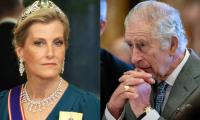ISLAMABAD: With the fifth-highest number of registered voters globally, Pakistan has a record 128 million people, constituting over half of its total population, registered as voters on the final electoral rolls (FER) for the upcoming general elections (GE) scheduled for February 8, 2024, marking a substantial increase of 22.5 million voters including 12.5 million women added since 2018.
According to a Fafen report titled as ‘Electoral Rolls, General Election 2024’ released here on Wednesday, this unprecedented surge brings the total number of registered voters to 128,585,760 in 2024, marking a significant rise from 106,000,239 in 2018 and 86,189,828 in 2013 making Pakistan fifth largest democracy in the world trailing India, Indonesia, United States of America and Brazil.
This is also the first time that Pakistan registered more women voters as compared to men in between two elections.
The Fafen report on electoral poll on general election 2024 reveals significant trends in women’s voter registration, alongside regional disparities in both overall and women’s registration. The Fafen said that in 2024, Punjab continues to have the largest percentage of voters (57 percent), followed by Sindh (21 percent), Khyber Pakhtunkhwa (17 percent), Balochistan (4 percent), and Islamabad (1 percent). Since 1977, the proportion of Punjab’s voters has declined but has remained above 50 percent. Its share was 61 percent in the party-less general elections of 1985, 60 percent in 1988, 58 percent in 1990, 59 percent in 1993, 57 percent in 1997, 55 percent in 2002 and 2008, 51 percent in 2013, and 56 percent in 2018. The comparative figures of registered voters since the 2013 elections are encouraging in terms of women’s voter registration. The number of women voters increased by 24.4 percent from 37,597,415 to 46,756,350 between 2013 and 2018, while the number of men voters increased by 21.9 percent from 48,592,387 to 59,243,889.
Over the past five years, women’s voter registration has accelerated further. From 46,756,350 in 2018 to 59,322,056 in 2024, the number of women voters climbed by 27 percent, while the number of men voters increased by 17 percent, from 59,243,889 to 69,263,704. The key findings of Fafen’s assessment of the electoral rolls reveal that over the past decade, Pakistan has experienced a substantial increase in the number of registered voters, witnessing an additional 42.3 million individuals added to the electoral roll since GE-2013, bringing the total to 128,585,760 in 2024 compared to 106,000,239 in 2018, and 86,189,828 in 2013. For the first time since the implementation of electoral rolls based on computerised national identity cards (NICs), the number of registered voters now represents slightly more than half (53.2 percent) of the country’s population, which stands at 241,499,431. In 2018, the proportion of registered voters in the population was 49.6 percent. However, the voter-to-population ratio is not consistent across all regions, districts, and constituencies. Punjab (57 percent) and Khyber Pakhtunkhwa (53 percent) have registered over half of their respective populations as voters.
Meanwhile, Sindh and Islamabad have voter-to-population ratios close to 50 percent, whereas Balochistan lags with 36 percent of its population registered as voters.
At the district level, the discrepancy in voter proportions becomes more evident. Of the 136 districts for which population and voter numbers were available, 78 districts have more than half of their populations registered as voters.
Among the remaining 58 districts, 49 have a registration rate of 30-50 percent, while in nine districts, less than 30 percent of the population is registered as voters. A similar pattern emerges at the National Assembly constituency level. Of the 266 constituencies, 159 have registered over 50 percent of their population as voters. Meanwhile, in 57 constituencies where the registration rate falls below 50 percent, five constituencies stand out with less than 30 percent of their population registered as voters. Women’s voter registration continues to lag behind their proportion in the population. However, the final electoral rolls for GE-2024 exhibit promising progress in women’s voter registration and a narrowing gender gap. Since its adoption in 2017, Section 47 of the Elections Act, which calls for special measures for women’s registration in constituencies with a gender gap exceeding 10 percent, has yielded dedicated efforts resulting in a significant increase in women’s voter registration. This has consequently led to a substantial reduction in the gender gap, decreasing from 11.8 percent in 2018 to 7.7 percent in 2024. Since 2018, women’s registration has surpassed men’s registration, with 2.5 million more women being registered than men. Out of the 22.5 million new voters added, 12.5 million are women and 10 million are men. This has contributed to an overall decrease in the gender gap. The reduction in the gender gap in the electoral rolls is almost universal across all regions, districts, and constituencies. The number of districts where the gender gap exceeds 10 percent has decreased from 85 in 2018 to 29 in 2024. The number of National Assembly constituencies with a gender gap above 10 percent has decreased from 173 in 2018 to 38 in 2024-12 constituencies are in Khyber Pakhtunkhwa, 11 in Balochistan, 10 in Sindh, and five in Punjab. The number of provincial assembly constituencies with a gender gap of over 10 percent has also declined from 398 in 2018 to 102 in 2024-Sindh has 31 constituencies, Balochistan 30, Khyber Pakhtunkhwa 24, and Punjab 17. The regional distribution of the 9.9 million gender gap demonstrates that the issue of gender disparity is a national rather than a regional issue. More than half of the overall gender gap - five million - is in Punjab, followed by 2.2 million in Sindh, and 1.9 million in Khyber Pakhtunkhwa. In these provinces, the overall gender gap is below 10 percent. Balochistan is the only remaining province where the gender gap in the provincial aggregate is above 10 percent.
In absolute numbers, the province’s gender gap is only 0.6 million-the lowest among the provinces. Considering the age dynamics of the gender gap, it is most pronounced among the younger age groups. The progress in women’s registration nationwide is evident in the declining number of constituencies where the gender gap exceeds 10 percent of registered voters. Out of 266 National Assembly constituencies, the gender gap is over 10 percent in 38 constituencies. In the provincial assembly, the gender gap remains above 10 percent in 102 out of 593 constituencies. In the 2018 general elections, the number of National and provincial assembly constituencies with a gender gap above 10 percent was 173 and 398, respectively.
The significant decrease in the number of such constituencies indicates substantial improvements in women’s registration over the last five years. This reduction in numbers is a testament to the remarkable coordinated efforts made by the ECP, Nadra, and civil society. Except for the 65 plus age group, men are registered in greater numbers across all age groups. However, the younger age groups of 18-25 and 24-35, collectively, account for 7.2 million of the overall gap of 9.9 million. In the 18-25 age group, the difference of 20 percentage points between men and women voters is the highest.
This category contributes 4.8 million, which is almost half of the overall gender gap of 9.9 million in the electoral rolls. In the 26-35 age group, men outnumber women by eight percentage points. In 2018, the proportion of registered voters in the population was less than 30 percent in seven districts - one in Khyber Pakhtunkhwa and six in Balochistan. In 74 districts, this proportion ranged from 30 to 50 percent. Of these districts, in addition to Islamabad, 26 were in Sindh, 23 in Balochistan, 16 in Khyber Pakhtunkhwa, and eight in Punjab. In 33 districts, registered voters accounted for 51 to 60 percent of the population - 20 in Punjab, 12 in Khyber Pakhtunkhwa, and one in Sindh. By 2024, the number of such districts had increased to 58, with 22 in Punjab, 20 in Khyber Pakhtunkhwa, 13 in Sindh, and three in Balochistan. In 16 districts, registered voters constituted more than 60 percent of the population in 2018 - nine in Punjab, three in Khyber Pakhtunkhwa, and two each in Sindh and Balochistan. This number increased to 20 districts in 2024 - 12 in Punjab and eight in Khyber Pakhtunkhwa. Among the provinces, Jhelum district in Punjab (76 percent), Karachi West in Sindh (69 percent), Abbottabad in Khyber Pakhtunkhwa (67 percent), and Nushki in Balochistan (52 percent) had the highest proportion of the population registered as voters. On the other hand, Kohistan in Khyber Pakhtunkhwa, Surab and Washuk in Balochistan, Malir in Sindh, and Rajanpur in Punjab had the lowest proportion of the population registered as voters. Overall, Jhelum and Kohistan have the highest and the lowest percentage of the population registered as voters, respectively. In 2018, 76 percent of the population in Jhelum was registered as voters. However, in Rajanpur, despite an increase in the percentage of registered voters from 43 percent in 2018 to 48 percent in 2024, the district still has the lowest share of registered voters in Punjab. In Abbottabad, Khyber Pakhtunkhwa, the proportion of registered voters in the population increased from 62 percent in 2018 to 67 percent in 2024. Kohistan remained the district with the lowest percentage of population registered as voters in both 2018 and 2024. In Sindh, despite decreasing from 77 percent in 2018 to 69 percent in 2024, Karachi West has the largest voters in population proportion among the districts in the province. Malir has the lowest voters in population proportion amongst the province’s districts. The district’s proportion of registered voters decreased from 38 percent in 2018 to 34 percent in 2024. In Balochistan, Nushki saw an increase from 47 percent in 2018 to 52 percent in 2024. However, Surab and Washuk have the lowest percentage of registered voters in their populations, both at 22 percent.
Protest is being led by religious scholars who have demanded immediate reopening and securing of roads
Dr Bhutta’s groundbreaking research and leadership improved lives of millions
Two FIA officers stationed at Faisalabad airport were also arrested for negligence during duty
Brand first became popular among feudal elites for its reliability in rural and mountain regions







